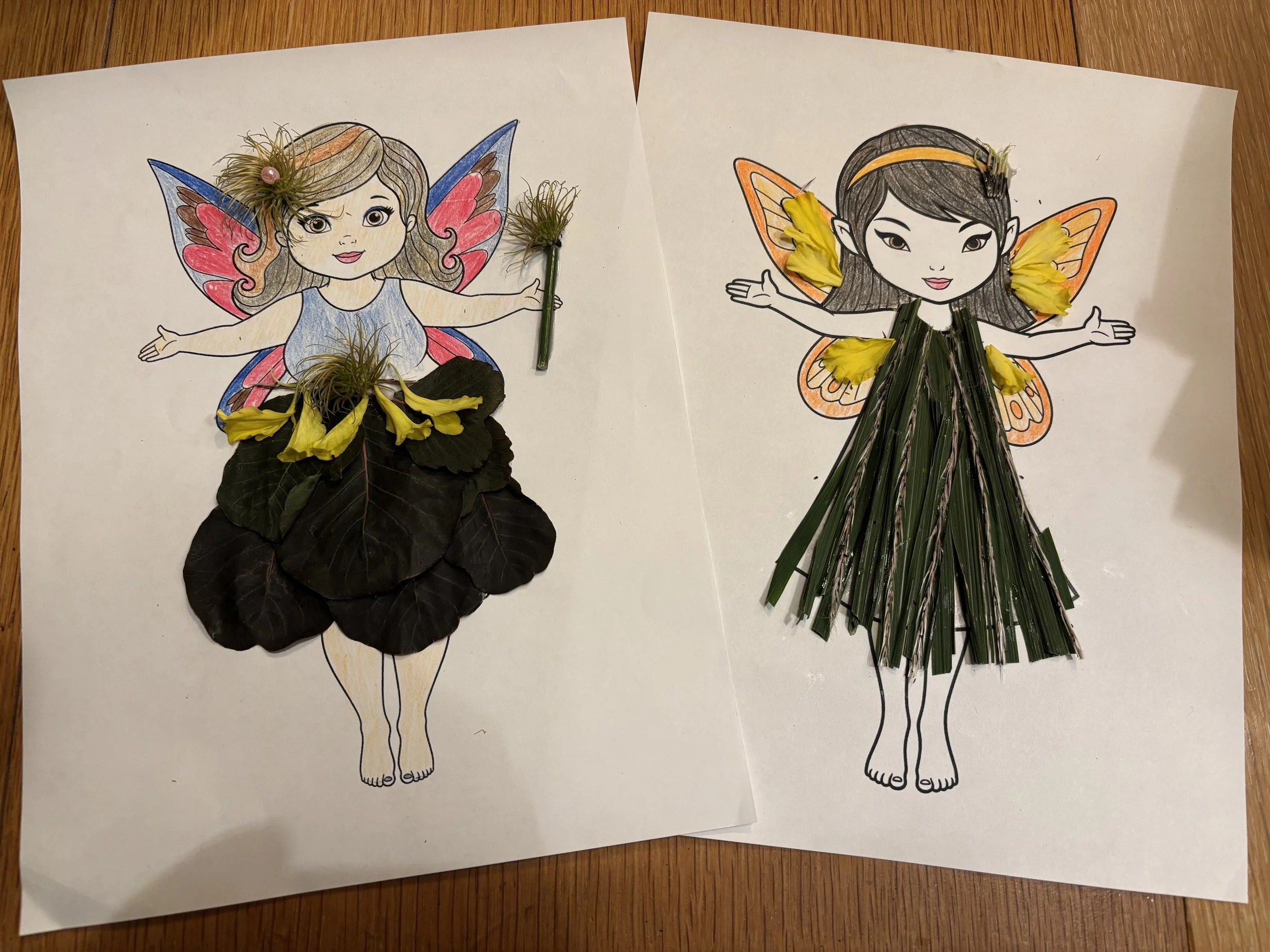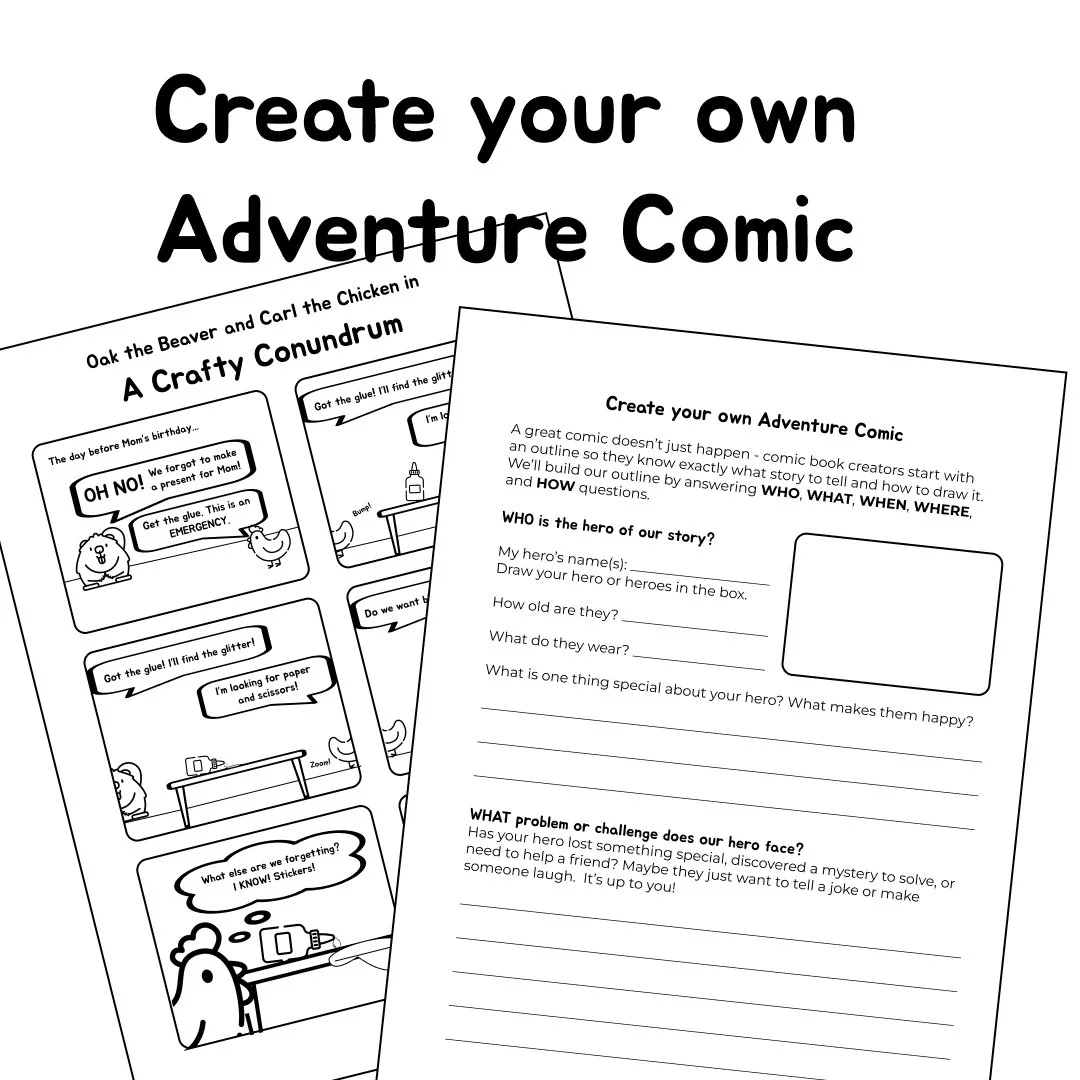Why Imaginative Play Matters: Keeping the Halloween Spirit Alive All Year Long
The Halloween I failed to turn my daughter into a boring adult.
On Halloween night, my eight-year-old daughter dressed as Pikachu and stayed completely in character all evening—speaking only in "Pika, Pika, Pikachu!" She was so committed to her role that she even convinced another child dressed as a butterfly to become Butterfree, another Pokémon character, instead.
I was embarrassed. We were invited to a Halloween party where we only knew the host, and I was worried these new people would think my daughter couldn't hold an age-appropriate conversation. I wanted them to like us, to see her as capable and mature.
Then the next morning, I read a newsletter article by my friend Tory Graf about her transformative experience with LARPing (live action role-playing) and how she now brings that creative, imaginative energy into her professional life. It hit me like a lightning bolt: I was wrong to be embarrassed. My daughter wasn't being immature—she was being brilliantly creative, fully expressive, and using her imagination to connect with other kids.
I was on the verge of turning her into a boring adult long before she should be.
Halloween just passed, and our kids spent weeks becoming superheroes, witches, princesses, and yes, even Pokémon characters. But why should that magic end when November arrives? Imaginative play isn't just fun—it's essential for childhood development, creativity, and emotional growth.
The Power of Pretend Play
When children engage in imaginative role play, they're not just playing dress-up. They're:
Building problem-solving skills by creating scenarios and working through challenges
Developing emotional intelligence by exploring different perspectives and feelings
Strengthening language abilities through storytelling and dialogue
Boosting confidence by taking control of their own narratives
Learning to think independently without adult-imposed rules
Research shows that children who engage in regular imaginative play demonstrate higher creativity, better social skills, and improved academic performance. (See this awesome article on the topic from the American Academy of Pediatrics: The Power of Play: A Pediatric Role in Enhancing Development in Young Children.) Yet as parents, we sometimes accidentally shut down this creativity with our well-meaning corrections.
Extending the Magic Beyond October 31st
The costumes might be packed away, but the spirit of transformation and creativity doesn't have to end. Here's how to keep imaginative play thriving in your home all year long—with simple crafts using supplies you already have.
6 Projects That Spark Year-Round Imaginative Play from GlueStick
Time to make: 20-60 minutes
Recommended age: any!
Transform outdoor exploration into magical fairy creation. Kids design their own fairy wings and decorate them with leaves, twigs, and flowers collected from nature walks. This project bridges the real world with fantasy, encouraging children to see magic in everyday materials.
Imaginative play opportunity: Create fairy stories, build fairy gardens, develop entire fairy kingdoms with unique characters and rules. Plus, get kids imagining the creative potential of the leaves, grasses, and flowers around them.
Author Credit: GlueStick
Time to make: 40-60 minutes, followed by unlimited play time!
Recommended age: 3-8
Keep the fall harvest spirit alive by building a pretend market stand. Children become shopkeepers, farmers, and customers, practicing real-world skills through play.
Imaginative play opportunity: Role-play running a business, practice counting and money skills, create product stories and customer interactions.
Author Credit: GlueStick
Time to make: 20-40 minutes, followed by unlimited play time!
Recommended age: 5-10
Those mismatched socks become instant characters with personalities, voices, and adventures. Puppet play is one of the most powerful tools for imaginative storytelling, and it’s easy to use up leftover fall kids’ craft supplies to make them.
Imaginative play opportunity: Put on puppet shows, create ongoing character storylines, use puppets to express feelings and work through emotions.
Author Credit: GlueStick
Create Your Own Adventure Comic
Time to make: varies
Recommended age: 7 and up
Does your child think they’ve outgrown imaginative playtime? That doesn’t mean they aren’t still creative humans who need imaginative outlets! Letting kids be the authors and illustrators of their own stories is another great way to encourage creative expression long past the time that dress-up seems fun. This project combines visual creativity with narrative development, giving kids complete control over their imaginary worlds.
Imaginative play opportunity: Develop ongoing comic series, create superhero alter-egos, build complex story universes with multiple characters.
Author Credit: GlueStick
Time to make: 10-20 minutes
Recommended age: 3-7 years old
Royalty isn't just for Halloween. A simple paper crown transforms any child into a king, queen, or ruler of their own imaginary kingdom.
Imaginative play opportunity: Create royal proclamations, establish kingdom rules, develop court characters and castle adventures.
Author Credit: Abby Allen for GlueStick
Time to make: 30+ minutes
Recommended age: 5+
Recycling meets imagination as ordinary milk cartons become enchanted fairy dwellings. This sustainable craft proves that magic doesn't require expensive materials.
Imaginative play opportunity: Build entire fairy villages, create resident backstories, develop fairy community rules and traditions.
How Parents Can Support (Not Stifle) Imaginative Play
After my Pikachu moment with my daughter, I've been more mindful about how I respond to her creative play. Here's what I'm learning:
Say YES to their reality. When a child announces they're a character, go with it. Ask questions about their character instead of correcting details.
Provide open-ended materials. Cardboard boxes, fabric scraps, paper, and craft supplies become anything in a child's imagination.
Resist the urge to direct. Let kids lead the play. Our job is to facilitate, not orchestrate.
Create time and space. Imaginative play needs unstructured time without screens or scheduled activities.
Join in without taking over. If invited into their play, follow their rules and storylines.
The GlueStick Approach to Imaginative Play
At GlueStick, we believe every child is naturally creative. Our app guides families through projects from setup to cleanup, using supplies you already have at home. The featured projects above are just a sample of the activities on our platform that encourage imaginative play.
We're not just teaching kids to follow instructions. We're giving them tools to build their own worlds, tell their own stories, and be whatever character they want to be.
Keep the Magic Alive
Halloween is a great reminder that kids thrive when permitted to transform, imagine, and play, but they shouldn’t need a special occasion to access that magic. With simple materials, dedicated time, and parents who say "yes" to their creativity, every day can spark imaginative adventures.
So the next time your child announces they're a superhero, a fairy, or a Pokémon, remember: you're not just playing along. You're nurturing a creative thinker, a confident storyteller, and a child who knows their imagination has power.
Ready to spark more imaginative play at home? Explore hundreds of creative projects designed to inspire year-round creativity at GlueStick.app. From setup to cleanup, we'll guide your family through projects that use what you already have—and unlock what your kids already are: naturally creative, endlessly imaginative, and absolutely magical.
What imaginative play has surprised you lately? Share your stories with us at @gluestickapp on Facebook, Instagram, Pinterest, and YouTube. We'd love to celebrate the creative magic happening in your home.







